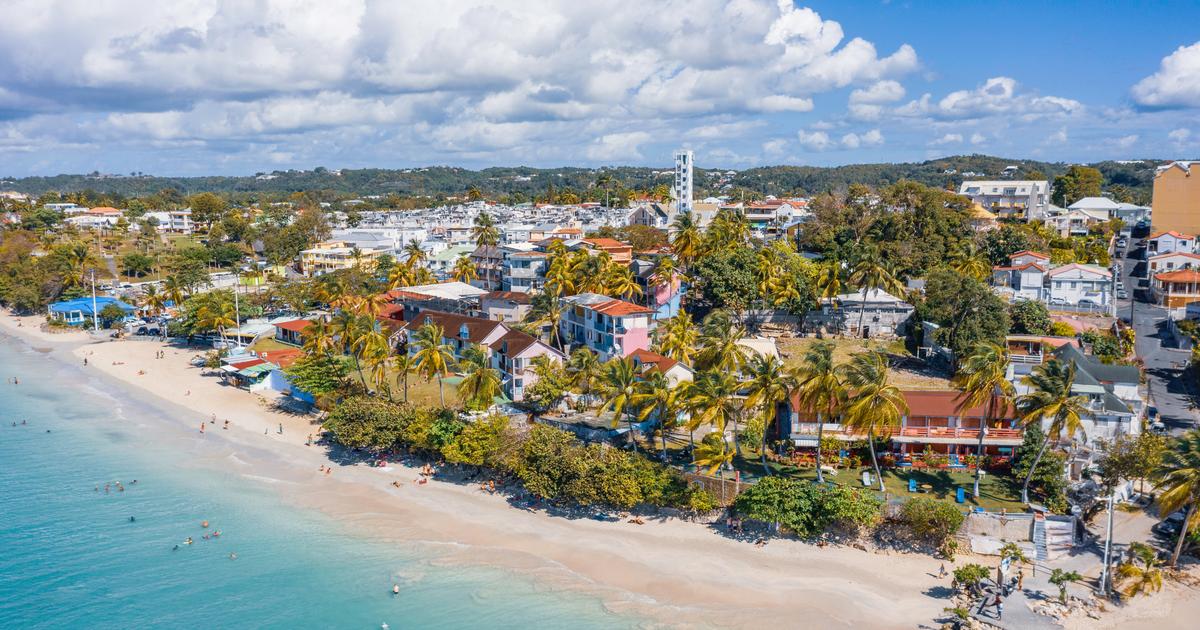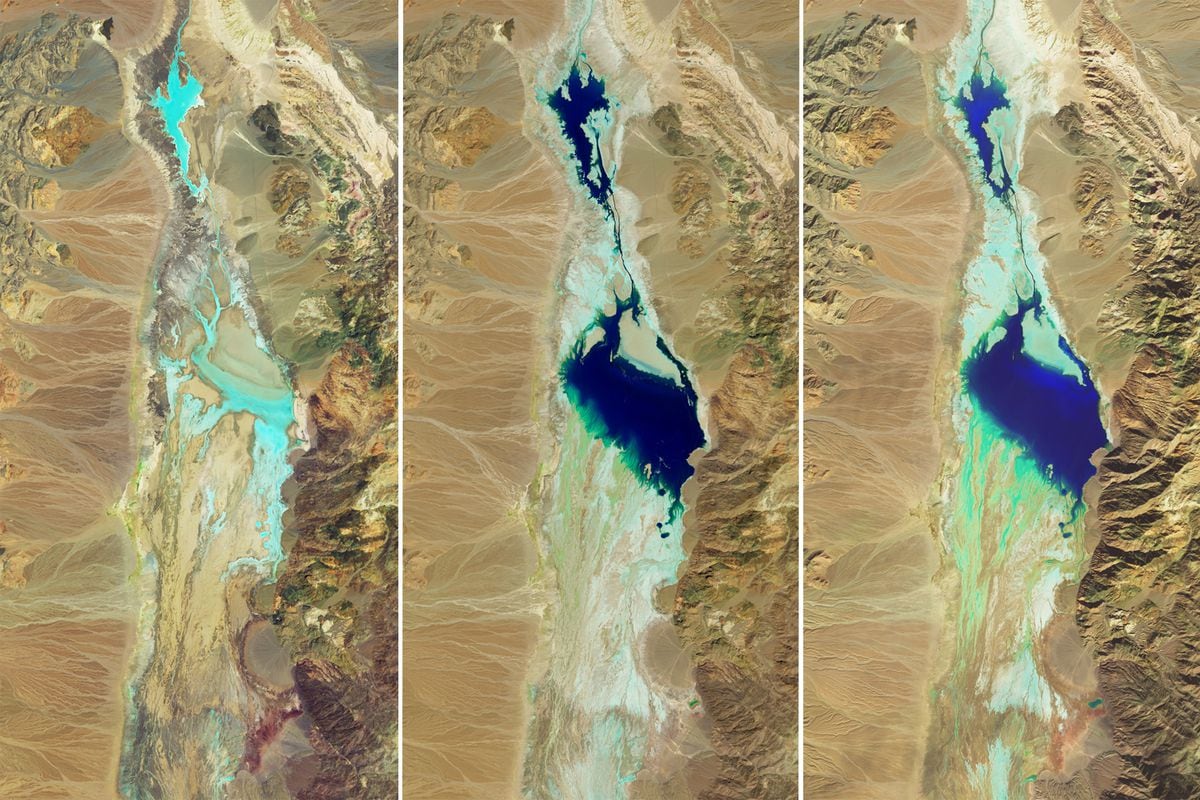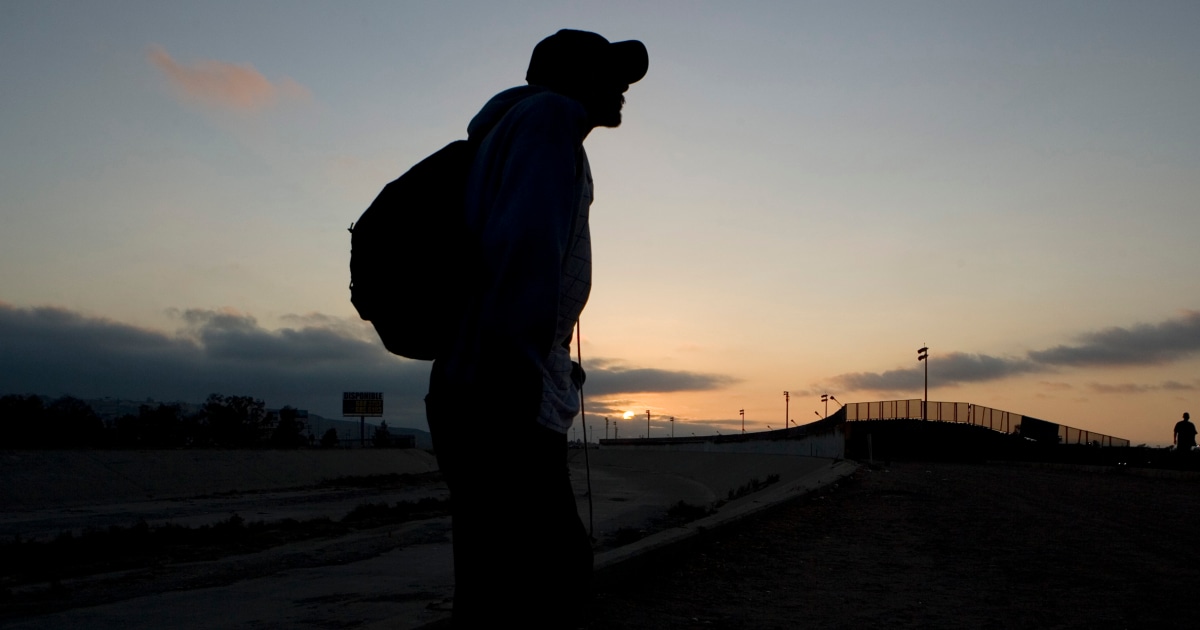The story has generally been told from the ground.
Where kingdoms and nations draw their borders in blood.
Several recent books tell us about it from the sea.
Ruiz-Domènec in the Mediterranean, a place of encounters and conflicts, from Ulises to the boats.
Peláez offers a history of navigation focused on scientific expeditions.
Water is a mobile substance, a public good that defies private property.
It is difficult to contain and requires collective management.
The relationship between the aquatic landscape and the State is the subject of Boccaletti's book.
Abulafia widens the spectrum towards a universal story about the waters, which have no borders, but dominate.
Seas and oceans as vehicles of exchange, violent or commercial, between peoples.
A floating story through which merchants, pilgrims,
pirates, explorers, cartographers, slaves, admirals, conquistadors, missionaries or oil tankers.
The movement of the ocean has created a network of exchanges, thefts and conflicts whose blood is diluted and hides its traces.
Piulats addresses the hidden nature of the sea in the style of Goethe, not only through scientific data, but drawing on mythology, arts and sciences, and emotions.
The proposal of
Anthropocean
is more urgent: it is possible to turn the ocean into our ally to mitigate the effects of climate change.
To do this, it is necessary to understand the complex carbon cycle, which oceanographer Cristina Romera explains effectively and clearly.
We are all in the same boat.
And that ship, like our bodies, is made of water.
We sail the sea and the water sails in us.
We not only come from water (the first organism on the planet was aquatic), but we breathe thanks to it.
Water also has its history.
Some say he even remembers.
And its mythology and symbolic space.
Inescapable human need (drinkable, navigable, diveable).
Our eyes are made of water, as is the giant that hosts us, the "critical zone" of the biosphere.
The aquatic volume of the planet forms a unit.
The water unites us.
It has allowed the exchange of merchandise, art, beliefs and philosophies;
to know other symbolic forms, other armies of metaphors, as the good Nietzsche would say, who only drank water.
To dive into the ocean is to return to the womb, which projects an image of paradise
To dive into the sea is to return to the womb, whose experience projects an image of paradise.
The fetus does not notice the alternation of day and night, it has not yet formed an ego, it has no inside or outside, it lives in the eternity of the moment.
Water and light are our parents.
Water has a mestizo and nomadic vocation.
It doesn't know how to be alone, it mixes and dissolves continuously.
It is protean, it can be fog, storm and metaphor.
The fleeting and irreversible time of the river that, in its flight, hurts us.
The ocean, a labyrinth without walls or windows (Borges).
The vanity of the bubble, the tear of despair.
It was a symbol of the Neolithic goddess that sustains life.
Water embodies the generating power of the Mother.
Before being born, the child is a fish.
The water break precedes childbirth.
In Egypt, the hieroglyph of Nut, goddess of the sky,
it is a jug of water.
In Crete and Mesopotamia there are vessels decorated with breasts and undulating lines that prefigure the waves of the sea and the meanders of the river.
The serpent goddess Nammu, a symbol of the dynamic power of water, gives birth to earth and sky in Sumerian myth.
She has her tail inside her mouth, forming an eternal cycle, a symbol of the umbilical cord that connects the fetus to the mother.
She is a labyrinth and connects this world with the world beyond.
In Greece, the staff of Asclepius, two serpents copulating, represents health and healing.
Because it meanders (like blood) and sheds its skin, the serpent is a symbol of the renewing power of water, which brings the dead back to life.
The serpent is the energy coiled in the sacrum, called Kundalini in India, the foundation of meditation.
And the power of knowledge among the Buddhists of the
mahāyāna
, which the serpents guarded under the waters awaiting the propitious moment.
The spirit of God hovered over the waters, he says in
Genesis
.
Wind and water, spirit and nature.
The embrace of him gives rise to the world.
In between, the transforming fire and the mud of the body.
The four joints of life.
Water comes from fire.
At least that's what modern cosmology says.
The oxygen in the water molecule comes from the stellar furnaces.
For Buddhists, the end of the world is a renewal wrought by fire, water and wind, in which the destructive power of water is greater than that of fire.
The fire lacks form, because it does not know how to be still.
Water takes all forms and knows stillness.
It is discreet in the dew, enveloping in the mist, absent in the drought, violent in the floods, emotional in the tear, luminous in the eye.
Tagore said that water symbolized the eternal dialogue between heaven and earth.
The Earth is the only known planet whose pressure and temperature allow its three states.
liquid water,
ice and steam coexist in a precarious equilibrium where water undergoes all phase transitions.
The energy it absorbs when it goes from ice to liquid is greater than that of iron or silver.
Water is the perfect molecule to transfer energy on the planet.
These phase transitions of the water cycle regulate the climate.
Some have come to think that life is organized water.
And the water cycle, an eternal return that rotates configuring the different faces and patiently sculpting the landscape.
Life as a dream of self-absorbed water, a very Hindu idea.
Some have come to think that life is organized water.
And the water cycle, an eternal return that rotates configuring the different faces and patiently sculpting the landscape.
Life as a dream of self-absorbed water, a very Hindu idea.
Some have come to think that life is organized water.
And the water cycle, an eternal return that rotates configuring the different faces and patiently sculpting the landscape.
Life as a dream of self-absorbed water, a very Hindu idea.
An iceberg in Greenland, in 2022. KEREM YUCEL (AFP / Getty Images)
On our planet it seems that water has emancipated itself from its father, fire.
The water keeps the surface warm.
Not only is it a powerful greenhouse gas, it's also an amplifying factor.
The higher the temperature, the more water the atmosphere can absorb, becoming more opaque to infrared radiation, thus increasing the temperature.
Water vapor protects the Earth from changes in the Sun. It is not always advisable to stay close to an irate parent, let them tell the children of Saturn or Freud.
In the age of the Anthropocene, technology enthusiasts celebrate its achievements, while environmentalists lament its impacts.
Science and technology, say the former, have given humanity control over its destiny.
The ingenuity of the engineer can be proverbial, like that of those brilliant minds who made the bomb at Los Alamos.
Today greenhouse gases are modifying the hydrological cycle of the planet.
An important part of these gases is produced naturally, either by volcanic eruptions or by the respiration of organisms.
But the planet has mechanisms to capture and remove part of that CO2 in carbon sinks.
Oceans, soils, and forests remove it from circulation for tens of thousands of years.
Thus the planet self-regulates and balances.
The Earth is the only known planet whose pressure and temperature allow its three states
Climate depends on many factors, not just greenhouse gases, but also volcanic and solar activity (the insidious parent) and variations in the planet's orbit (how far away we stay).
Everything seems to be caught with pins.
A fragile balance that continually threatens to break.
If greenhouse gases shoot up, the Earth will warm up, but if they disappear, it will cool down.
Hence, the planet has oscillated between glacial and non-glacial periods.
These changes have a period of millions of years.
However, in the 250 years since the industrial revolution, the concentration of CO2 in the atmosphere has increased by 48%, as the Keeling curve shows.
68% of the emissions are due to the burning of fossil fuels and the production of cement;
the remaining 32%,
We cannot understand global warming without knowing the carbon cycle.
Almost 20% of our body is carbon.
The main greenhouse gases are CO2 and CH4 methane (the latter is lethal when we breathe it, it does not allow the blood to carry oxygen).
Carbon never goes alone.
It always associates with other atoms to form molecules.
There are carbon molecules in water, air, fire, earth, and living things.
Carbon is what binds the elements together.
The amount of carbon on the planet remains stable, it does not go into outer space.
Carbon is an earthly affair.
There is a surface cycle, where carbon travels through the atmosphere (years), water, and land (thousands of years), and a longer, deeper cycle in rocks and sediments of the Earth's crust and mantle (millions of years).
As is known,
Fossil fuels were once living things, broken down over thousands of years by bacteria that don't need oxygen.
They were buried under layers of sediment and subjected to high pressure, giving rise to oil, gas and coal.
Life is recycled into fuel and heat vivifies.
With the industrial revolution, carbon has begun to move from the deep to the surface cycle.
The extraction of these fuels and their burning on the surface during the last centuries have increased the surface flux of CO2 and triggered global temperatures.
Life is recycled into fuel and heat vivifies.
With the industrial revolution, carbon has begun to move from the deep to the surface cycle.
The extraction of these fuels and their burning on the surface during the last centuries have increased the surface flux of CO2 and triggered global temperatures.
Life is recycled into fuel and heat vivifies.
With the industrial revolution, carbon has begun to move from the deep to the surface cycle.
The extraction of these fuels and their burning on the surface during the last centuries have increased the surface flux of CO2 and triggered global temperatures.
One may wonder what water has to do with all this.
Much.
The ocean is one of the main carbon sinks (along with forests and soils).
All that sequestered carbon, which the planet had removed, is now coming back.
It is as if hundreds of volcanoes have awakened.
The plant removes carbon from the atmosphere (CO2) and stores it in its body.
When they die, that carbon remains sedimented in the soil.
Although, if a battery degrades it, it can return to the atmosphere.
Bacteria breathe like us.
The human species only represents 0.01% of the planet's biomass, animals 0.36%, while plants are 82% and bacteria 13%.
Most bacteria are harmless and without them the planet would not be what it is.
The seas breathe CO2.
Some areas of the ocean inhale it and others exhale it.
The colder northern water captures more CO2 than in the tropics.
As the water cools and becomes denser, it sinks with all that CO2 and begins its journey south on the deep ocean currents.
It will remain stored deep down until it returns to the surface and is released in warmer areas.
Global warming may reduce the ocean's ability to capture CO2, which would increase the greenhouse effect.
The ocean traps carbon, but it also releases it.
But it captures more than it releases.
This capacity to capture CO2 is limited.
Now it captures a third of the gases released by human activity.
It is not easy to predict where all that excess carbon will end up.
The modern error is to assume that we are not nature or that it works at our service
The ocean and the weather go hand in hand.
The seas store the so-called “blue carbon”.
Seagrass beds and mangroves sequester a large amount of carbon.
If we protect those environments, we prevent that carbon from going back into the atmosphere.
Plankton lives hundreds of meters deep.
At night it rises to the surface to feed.
So do squids, to feed under cover of darkness.
They go up at night and go down by day.
The food is above, as for mystics or readers.
The vertical migration of marine organisms is like the migration of swallows, butterflies or wildebeest.
These microscopic creatures move, like migrants, in search of food.
Time has different speeds for all of them.
A day for a microorganism can be like a year for a bird.
The planet also migrates.
It rotates continuously to spray itself with sun.
The solar system migrates in turn.
And the galaxy around the Great Attractor.
We are migrant beings and what we call the universe has an itinerant and acentric (or, better, multicentric) nature.
The center of the universe is found in every living being.
And everything is full of life.
A large scale of being like the one proposed by Plato in the
Timaeus
.
Beings within beings.
Life is not so much adaptation to the environment as the creation of environments.
The Amazon forest has a certain autonomy and produces the rain it needs.
Trees, when they need water, generate more steam, which becomes clouds and rain.
They pump water from the ground into the atmosphere (they lift it up and sweat through their cups).
The anthropic principle rules here.
We see the universe the way we see it because we exist.
It is not possible to leave the viewer out of the equation.
Any valid theory about the universe has to be consistent with the existence of the human being.
A truism that is ignored by many models of the universe.
What is evident is that, as a civilization, we have lost our connection with nature.
The natives remind us of it.
They are your custodians.
The modern mistake has been to assume that we are not nature or that nature was at our service.
There is no goodness or naivety here.
Taking care of nature is taking care of ourselves.
Now we are the dark side of nature, the question is if we want to continue being so.
readings
anthropocean
.
Cristina Romera.
Espasa, 2022. 256 pages 19.90 euros.
water
.
Giulio Boccaletti.
Translation by Margarita Estapé.
Attic of Books, 2022. 512 pages 26.90 euros.
Ocean planet.
Javier Pelaez.
Review, 2022. 504 pages 23.90 euros.
A boundless sea.
David Abulafia.
Translation by Tomás Fernández Aúz.
Review, 2021. 1,392 pages, 38.90 euros.
Ulysses' dream.
José Enrique Ruiz-Domenec.
Taurus, 2022. 512 pages 21.90 euros.
We are water that thinks.
Joaquin Araujo.
Review, 2022. 336 pages 19.90 euros.
Discover the hidden nature of the sea.
Octavi Piulats.
Carena, 2018. 144 pages, 14 euros.
You can follow BABELIA on
and
, or sign up here to receive
our weekly newsletter
.
Subscribe to continue reading
Read without limits
Keep reading
I'm already a subscriber






/cloudfront-eu-central-1.images.arcpublishing.com/prisa/CBM2UCNBEJCXFLJSEVQOH6Y5WU.jpg)








/cloudfront-eu-central-1.images.arcpublishing.com/prisa/GP2ZXWJRROQQUNBAGJPH3WIOVQ.jpg)